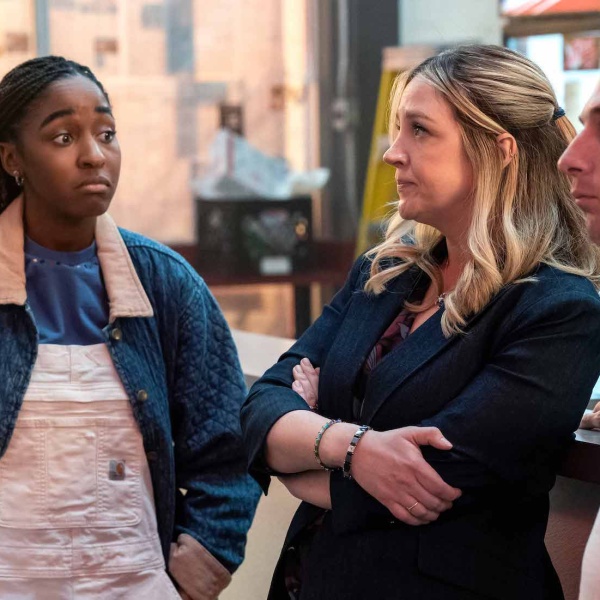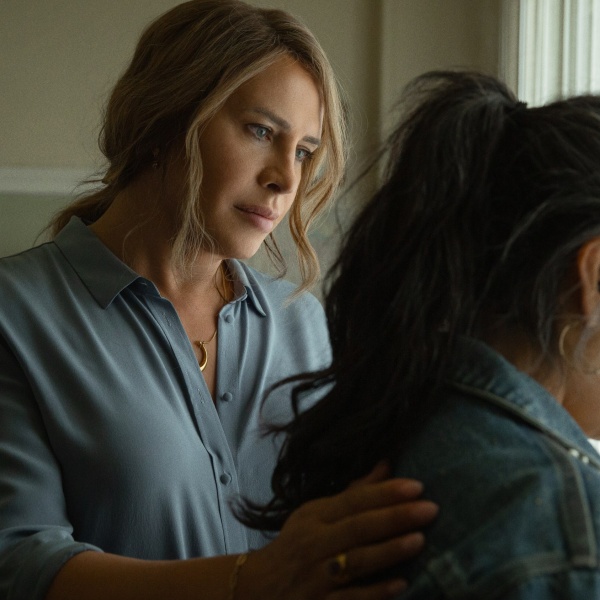Winner of the U.S. Documentary Competition Grand Jury Prize at Sundance in 2020, Amanda McBaine and Jesse Moss’ “Boys State” embodied the best and worst of the eponymous tradition that it captured on camera: An annual leadership program, funded by the American Legion and held in almost all 50 states since the 1930s, in which 1,000 or so hyper-ambitious teenage boys from all walks of life are given a week to form and elect a mock government.
On the one hand, their film offered a semi-realistic microcosm of the American system at work, and an optimistic preview of what Gen Z — at least its most politically engaged young men — might bring to the table as they become old enough to and run for office. On the other hand, the otherwise inclusive “Boys State” reinforced the American Legion’s history of preserving the status quo through a “separate but not so equal”approach that makes it obvious who’s really expected to inherit the power in this country. For all of its focus on the changing face of American democracy, McBaine and Moss’ film barely acknowledged Boys State’s underfunded sister program, in which teen girls vie for the kinds of offices that few — if any — women have ever held in the real world.
In that light, McBaine and Moss’ “Girls State” might smack of inevitability — a gender-swapped mea culpa of a sequel only made so that Apple could turn one of its more notable documentaries into a non-fiction franchise. But the closer “Girls State” gets toward its climactic elections, the more it confronts the same patriarchal bias and performative empowerment that might have girl-bossed the life out of a lesser film (although this one still plays a particular Taylor Swift song over its end credits). And the more it confronts the role those phenomena manage to play on the university campus where the Boys and Girls State programs are being held at the same time for the first time in Missouri history (but still completely separate from one another in order to avoid sins of the flesh and whatnot), the more frighteningly it reflects a near-future — or now present — in which political agency is just something young women get to pretend they have if there’s room in the budget for a bit of make-believe.
Shot in the summer of 2022 (a month after a draft was leaked of the Supreme Court’s decision to overturn Roe v. Wade, and just a few days before that dreadful threat was made real), “Girls State” finds its fun and dynamic cast at a moment of historically frustrated potential, even if some of them are slow to realize that. No one gets there slower than a girl named Emily, and no one has a more concrete and impressive reaction to that understanding once they do.
Like just about everyone in the program, Emily is one of the most overachieving kids at her high school — the one who’s a member of every club on campus and knows exactly what year she plans to become president. A tall, thin, photogenic blonde who’s won every election in her life, Emily is a closet Republican who keeps her political beliefs a secret at school because she’s afraid that labeling herself might cause people to stop listening to her (she treats Girls State like something of a coming-out party for her conservatism). The fact that she immediately becomes the easiest person in the film to root against suggests that Emily might not be so wrong about that.
Emily is one of the many Girls State participants who hail from MAGA-friendly corners of Missouri (a lot of short-term friendships are forged through shared Christianity), though several of the young women she meets aren’t so at peace with that. Positioned as Emily’s most immediate threat, Faith inherited her family’s militant right-wing ideology, and also the hostile, question everything mindset behind it; voted “most judgmental” in high school, she began to poke holes in her parents’ belief system as she grew older, and eventually made a hard pivot to the other side of the aisle. Maddie (a gay Bernie fan), Cecilia (a fiery and outspoken feminist), and Tochi (an erudite attorney general candidate who surmises that she might be the first Black person some of these girls have ever really gotten to know), well… they probably didn’t need that kind of come-to-Jesus moment to put their faith in more progressive movements.
We also meet a handful of girls who are less outspoken about their politics, several of whom naturally decide to interview for seats on the Girls State Supreme Court. Brooke is a level-headed cheerleader type who has the fortitude to push back against the prevailing beliefs of her anti-choice hometown, while Nisha — a bookish Indian girl anxious about her social skills and overly serious by her own admission — wants to make her voice heard without submitting to the attention-seeking rigors of a general election. For all of the political discourse the Girls and Boys State programs manage to provoke among their participants, they can’t avoid the fact that our system of government ultimately amounts to a popularity contest where a gift for public speaking is more valuable than a mind for policy.
Like its predecessor, the broadly sketched “Girls State” is sustained by the suspense generated around the race for governor (the programs’ highest office), but where “Boys State” devoted a good chunk of its B plot to the debate over gun control, this sequel’s defining side-story unavoidably coalesces around abortion; specifically, whether or not the Supreme Court believes that forcing pregnant women to speak to and share their personal information with a counselor prior to receiving an abortion is an unconstitutional breach of privacy. There’s a heartbreaking — and hard-to-stomach — dramatic irony to scenes where these girls debate the finer points of their reproductive freedoms: just a few days later the real Supreme Court will deprive them of those freedoms altogether.
That case — and the dark shadow that hangs above it — informs the second half of this documentary as the conversations on campus begin to focus on female-driven issues and “Girls State” gradually moves away from the reality show-like competition baked into its premise in favor of something more interesting and less resolvable. Where the talking points in “Boys State” were focused on macro debates, the dialogue here starts to center on more personal and immediate topics. Topics like “why do we have to adhere to a strict buddy system while the boys are allowed to move around on their own?” and “why does the boy who wins the governor’s race get sworn in by the actual governor of Missouri, not that anyone really wants to meet that asshole?”
Those questions soon beget others, as the girls grapple with the notion that female empowerment initiatives can inadvertently reinforce the structures that deprive them of their power in the first place (those questions might also have been more dramatically framed in a film that intercut between Boys and Girls States, but maybe this is a trilogy in the making). It’s fascinating to see these young women contend with that dilemma, even and especially as they vie for a scholarship that promises to propel their political ambitions forward.
Yes, their experience at Girls State reinforces the spirit behind the “you go, girl!” sentiments that are shoved in their faces all week long; femininity is powerful, and all the more so when women “straighten each other’s crowns instead of pointing out that they’re crooked.” To that end, it’s probably not unrelated that “Girls State” is convincing where “Boys State” sometimes fell a bit short, as Emily — who might just become your favorite character by the end — almost single-handedly makes good on the eye-rolling idea that we might benefit from being exposed to people on the other side of the aisle. It’s a fitting takeaway from a film about a group of young women who discover the power of listening to their own voices by sharing in the same primal scream.
Grade: B
“Girls State” premiered at the 2024 Sundance Film Festival. Apple will release it later this year.






